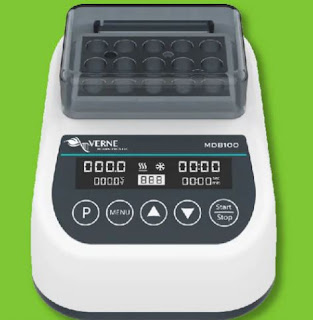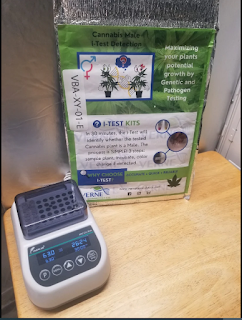Latent Hopvirus (HLVd) | Verne Bioanalytics
The metabolic activities of its host plant are totally necessary for the reproduction of Hop Latent Viroid, commonly known as HLVd. The circular, single-stranded viral RNA known as HLVd. As its name suggests, HLVd is present all over the world in hops, but it may also infect cannabis, which is related to hops. When cultivating cannabis, it's one of the viruses to be on the lookout for.
There is not much that can be done to heal the plant once it has been infected by this virus, an infectious organism smaller than a virus. At least, that's how Hop Latent Viroid (HLVd) and the harm it does to legally produced cannabis crops were previously understood.
The greatest threat to the legal cannabis industry may be the Hop Latent Viroid. Due to its latency, it is very hard for growers to detect, and it may spread undetectable across a plant, drastically lowering the amount of money it can produce.
HLVD Testing carried out over three years among more than 100 cannabis farmers in California showed that the removal of economic value resulted in losses reaching billions of dollars. Ninety percent of the cultivation sites' HLVD Testing showed positive results for HLVd in more than a third of the cases. The picture is not promising if you generalize those farmer figures from the West Coast to all American producers.
The California-based cannabis genetics company Dark Heart Industries tested 200,000 samples of tissue to find the hazard that ultimately resulted in dudding in cannabis. Stunting, a decline in vigor, loss of productivity, and morphological changes are all results of dudding.
The first scientist to attribute the loss to HLVd was geneticist Dr. Jeremy Warren, who also serves as the laboratory's director and as director of plant science at Dark Heart. He was the first scientist to come up with a cleaning method to get HLVd out of contaminated samples.
What Does The Name "Hop Latent Viroid" Mean?
HLVd, or hop latent viroid, is a plant pathogen. It causes a syndrome called latent viroid infection when it affects cannabis. You'll see a cluster of tiny, white spots on the foliage of plants affected by this disease. These spots may eventually cause the harmed leaves to perish since they will soon become yellow and brown. Latent viroid infection is a significant problem for cannabis growers. The quantity and quality of their produce might both be significantly reduced as a result. When cultivating cannabis outdoors, be vigilant for any indications that your plants may be contaminated.
In Cannabis HLVD
In 2017, a number of Californian cultivators of Cannabis sativa reported that several plants had limited growth. However, no more signs that may have pointed to the reason for the plants' limited growth were discovered. The plants in issue were proven to have been infected with HLVd by a large body of later scientific investigation.
How are you expected to detect whether or not your plants are infected with HLVd if the symptoms are not readily apparent? Watch out for the following symptoms in your plants, and then get them examined to check for the presence of the viroid.
Plants that are growing slowly
Diminished vitality
Decreased efficiency
Reduced trichome production and development
Unnatural expansion
Production of terpenes and cannabinoids may be decreased by up to 50%.
Chlorosis and other leaf abnormalities
Broken stems
Combined with a decline in yields and a loss in quality
You could see that the leaves are smaller and the internodal spacing is closer during the vegetative stage. You could see that the buds are smaller and less thick, with fewer trichomes growing, during the flowering period.
What Effects Do Cannabis And Hemp Plants Suffer From The Hop Latent Virus?
Plants that are infected with HLVd will not suffer any physical injury or show obvious signs of the infection (such as yellowing or curled leaves), but they will exhibit subtle symptoms that are sometimes referred to as "dudding."
HLVd-infected plants exhibit smaller leaves, closer-spaced nodes, and a shorter height during the vegetative stage. HLVd-infected flowering plants exhibit overall buds that are much less thick, smaller, and looser. HLVd-infected cannabis plants were estimated to be half as potent as healthy plants, with a projected 30% reduction in overall production.
What Exact Method Is The Hop Latent Viroid Transmission?
Cultivators should always clean their tools before starting work on a fresh plant since HLVd is frequently spread through infected tools and equipment.
If cuttings are taken from an infected mother during the cloning process, it is also feasible for HLVd to be transmitted. It may be difficult to identify mother plants that are infected with HLVd since the virus' symptoms aren't usually obvious during the vegetative stage. This is especially true if the infection happens later in the plant's life, when the illness will not have as obviously inhibited the plant's growth.
What Actions Can You Take To Decrease Your Risk Of HLVD?
Since viroids are resistant to isopropyl alcohol and other standard disinfectants, a solution including bleach is needed to get rid of the danger. Before taking any cuttings from the mother plants at your facility, it is crucial to perform routine laboratory HLVD Testing on them due to the systemic nature of the viroid.
It will aid in stopping the virus's spread. Additionally, if any freshly purchased plants originated from an outside source, such as a nursery, they must first be quarantined and put through a screening procedure before being put into production. Active preventative measures, thorough screening, and broad reporting of recently found data within the cultivation community may greatly minimize the harm done to the business even if HLVd will probably be around for a while.
How Can The Hop Latent Virus Be Controlled?
Although it is technically feasible to remove HLVd from a cannabis or hemp plant using tissue culture, this labor-intensive process should only be used on cultivars that are crucial to your business's success.
As is the case with the majority of plant illnesses, prevention is key. The spread of any further plant infections may be largely prevented by following the right cleanliness protocols. Always use clean gloves when dealing with a new plant, and frequently disinfect your tools, if you wish to stop the spread of HLVd. Visitors and staff must wash their feet in footbaths and put on gloves, coveralls, hairnets, and beard nets before entering the growing area. A footbath is also necessary.
Cultivators should perform qPCR tests on the plants to confirm that they are virus-free before taking any cuttings from mother plants. In order to make sure they are not importing contaminated plants into their growing regions, growers must also do HLVD Testing on newly arrived clones and clones from outside sources.
Hop Latent Viroid Treatment
There is presently no definite HLVd infection cure or therapy. The viroid may be controlled, nevertheless, much like many other plant issues, by removing and eliminating infected plants as soon as they are discovered. When propagating plants, it's also crucial to keep everything clean and steer clear of tainted plant material. You can always know what to do with an overview of HLVd.
HLVD Troubleshooting
To handle and maintain HLVd-infected plants under control, you can implement the few straightforward management techniques listed below:
Eliminate and eliminate any diseased plants. The most important stage in controlling HLVd is this one since it will help stop the virus from spreading to other plants.
Planting sensitive species where HLVd is known to exist should be avoided.
In places where HLVd is suspected to exist, plant resistant species.
Keep an eye out for HLVd infection symptoms in plants, and kill or remove those that do.
Maintain a clean and hygienic environment in the greenhouse or garden. All plant waste must be removed, and all instruments and equipment that come into touch with plants must be cleaned and sanitized.
You should be aware that tissue culture is crucial in the development of healthy, HpLVD-free plants. However, if you have no prior experience with it, the process won't be as straightforward as you may anticipate. Additionally, constructing or developing your treatment will take a month and involve mixing several chemical types and amounts and testing them on plants. The month will be spent going through this procedure. Just think about the time and money it will take to finish.
It would be beneficial if you were to learn at an early stage that there is currently no known treatment for HLVd. The greatest thing you can do is search for a qualified source to assist you in HLVD Testing of plants and identifying those that are vulnerable. Early detection of HLVd allows for the removal of diseased cannabis plants and prevention of the disease's spread to unaffected plants.
Keep in mind that the HLVd virus is a harmful plant disease that poses a serious threat to agricultural productivity. However, by following a few simple management techniques, HLVd may be kept under control and its harm to cannabis plants can be minimized.




Comments
Post a Comment